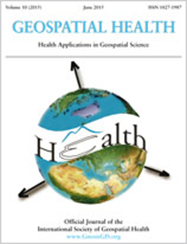On the geographic access to healthcare, beyond proximity

All claims expressed in this article are solely those of the authors and do not necessarily represent those of their affiliated organizations, or those of the publisher, the editors and the reviewers. Any product that may be evaluated in this article or claim that may be made by its manufacturer is not guaranteed or endorsed by the publisher.
Authors
This study examined the incongruence of travel distance between the nearest provider and the provider that pregnant woman actually chose to visit. Using a dataset of South Carolina claims including rural and urban areas for the period 2014-2018 based on live births of 27,290 pregnant women, we compared the travel distance and travel time for two providers of health: the nearest facility and the main one for the area in question. The number of the former type was counted for every case. The mean travel distance/time to the nearest provider was 3.2 miles (5.2 km) and 5.0 minutes, while that to the main (predominant) provider was 23.0 miles (37.0 km) and 31.7 minutes. Only 21.6% of pregnant women chose one of the closest facilities as their provider. The mean travel distance and time to the nearest provider for women in rural areas were more than twice that for urban women but only 1.2 times for the main provider. Rural women had one third fewer providers situated closer than the main in comparison to number available for urban women. Thus, we conclude that proximity is not the only factor associated with access to healthcare. While evaluating geographic access, the number of available health providers within the mean travel distance or time would be a better indicator of proximate access.
How to Cite

This work is licensed under a Creative Commons Attribution-NonCommercial 4.0 International License.
PAGEPress has chosen to apply the Creative Commons Attribution NonCommercial 4.0 International License (CC BY-NC 4.0) to all manuscripts to be published.













